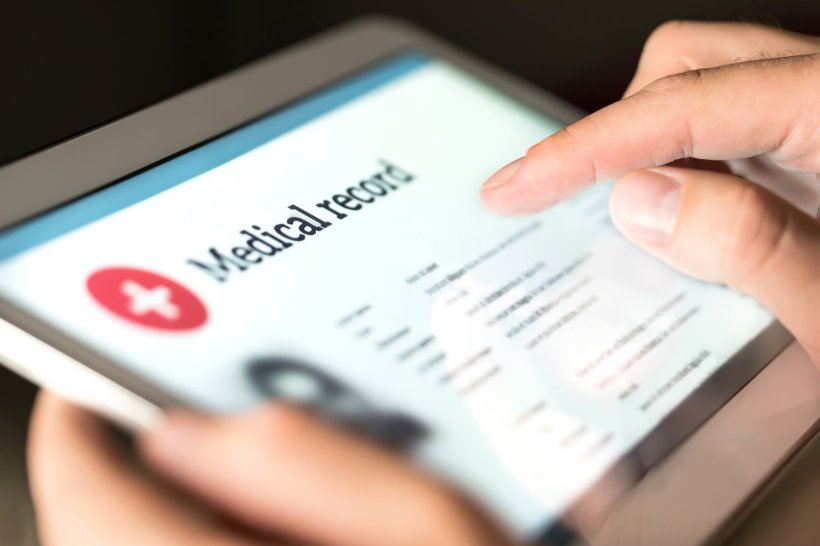
Image source: Adobe Stock/terovesalainen
Article • Implementing the electronic patient record in the hospital
EPR: Step by step into the digital future
In Europe, Germany has been bringing up the rear in implementing the electronic patient record (EPR) for years. While the EMRAM score of German hospitals continues to be negligible – on the international as well as on the European level – there are signs of progress that give reason for hope.
Report: Dr Christian Heitmann and Dominik Weis, Curacon
Far too often, paper records still dominate daily routine in German hospitals despite the fact that the EPR is the linchpin of digitalisation. Under the new so-called Future of Hospitals law in Germany, substantial funding is earmarked for EPR implementation. Financial support is provided above all for the digitalisation of documentation (clinical and care) and medication as well as for linking patients to a digital portal before and after their hospital stay. An analysis by Curacon shows that 54 percent of the grant applications aim at expanding digital documentation. The fact that suddenly EPR is becoming top priority can be easily explained: in the future, hospitals that do not introduce EPR will be sanctioned.
By 2023, implementation progress has to be shown via the so-called digital radar. Since this is a rather tight time frame for such a complex project, hospitals are under severe pressure. Experience shows that the introduction of the EPR is a demanding task, mostly because almost all members of the clinical and care teams are involved. Moreover, in the different departments and wards different documentation standards have evolved which have to be harmonized when introducing the EPR. Most importantly, however, the documentation process itself will have to change since maintaining paper records is very different from maintaining electronic ones. Case in point: Much data will be transferred from the medical devices or from the lab directly into the EPR and no physical records have to be searched for or picked up. On the other hand, digital documentation can be more time consuming, e.g. with medication, since the product has to be selected and the dosage has to be determined in detail. Last but not the least, a technical infrastructure has to be put in place that gives everybody access to the EPR from anywhere. The following four steps help to successfully implement the EPR:
1. Create the technological foundation
In many German hospitals, the infrastructure is outdated and not all institutions are equipped with WiFi, which is a basic requirement for using mobile peripherals such as tables, carts, as well as smartphones and mobile medical devices. Updating the infrastructure with WiFi, however, is expensive since cabling and access points have to be installed. These basic technology and network structures have to be created prior to any EPR implementation. Since this time-consuming task cannot always be handled by the internal technical and IT teams in addition to their other responsibilities, external service providers might have to be contracted.
In a next step, all medical devices have to be integrated into the network either by cable or WiFi in order to be able to transfer all diagnostic results of the medical equipment directly into the EPR. Obviously, it needs to be ascertained that all medical devices are indeed network-enabled. If not, modern replacements need to be purchased – an investment item which has to be included in the budget. Moreover, since the necessary peripherals are part of the technological foundation, the provider of the hospital information system (HIS) has to be consulted as to the most suitable tablets, smartphones and carts.
2. Develop a documentation standard
Parallel to creating the technological foundation, a common documentation standard should be developed. Many hospitals simply follow their hospital information system but each HIS uses its own documentation philosophy. Many systems are configurable which means the customer has to set the parameters. This is often done by pilot departments and pilot wards which – consciously or not – create the rough frame for the documentation standard. When EPR implementation is planned, many hospitals are tempted to simply transfer the paper record 1:1 into the digital version. This is a crucial mistake since many of the existing structures and processes are shaped by the paper approach and are unsuitable for digitalisation. It is therefore strongly recommended to establish a multi-disciplinary team of clinical and nursing staff to define a single, unified documentation standard for the entire institution. It makes little sense to task the IT department with the leadership and control of such a project. Rather, the documentation standard, which includes patient vital signs, medication and the clinical and care documentation, has to be shaped by the professions and professionals who will use it on a daily basis.
3. Clear project organisation and responsibility
The objective of implementing the EPR is the full digitalisation of all patient data. In order to achieve this goal, all documentation processes have to be re-thought since a 1:1 transfer of analogue processes will never bring about the EPR’s potential increase in efficiency and reduction of work load. With the focus being on the processes, the project should not be led by the IT department unless that department is in charge of process development across the institution. If the hospital has a dedicated department responsible for process development, it should be in charge of the implementation project. If no such department exists, a specialist for documentation and clinical and care processes needs to be identified. If there is no person with this specific job profile, experienced nursing or clinical staff with a strong interest in IT and in such an implementation project are a good choice.
It is important to squarely place the project in a transparent project organisation. We recommend a 3-level approach encompassing three subprojects, project management and a steering committee. One subproject is tasked with creating the technological/IT preconditions, a second one with developing the documentation standards. These two subprojects should work in parallel. When they have reached a certain point, the third subproject – implementation – can start.
The project manager should be a person who is familiar with the documentation processes and the documentation contents. The task is to manage the project and control project progress.
The steering committee, which is made up of representatives of the core decision-making units of the hospital or the hospital group, will be regularly informed about progress and problems and decide on important measures to be taken in case there is a deviation from the plan. With such a structure, the implementation process can be controlled and enforced.
4. Migration and schedule
Very often, EPR is implemented as a pilot on a single ward or in a single department. Then, implementation is expanded step by step across the institution. The underlying idea is that specific documentation requirements can thus be integrated step by step as well. While this approach is frequently chosen because no unified documentation standard has been established prior to the implementation, it exposes the project to two risks: Firstly, when new requirements regarding more and more topics are constantly added, the unified documentation standard is weakened and the entire process tends to develop into a 1:1 transfer of the analogue patient record. Secondly, the step-by-step approach becomes problematic when a patient is moved from an already digitalised ward to a non-digitalised one. At that point, all documents have to be printed out and turned into a paper-based record. In view of these risks we strongly recommend to establish a comprehensive documentation standard prior to implementation. This standard can then be tested on one or two wards/departments. In a next step, it is implemented in all other departments. The EPR is adjusted only when urgently needed data have not yet been saved. These changes have to be approved by the subproject team in charge of the documentation standard. In order to reduce the complexity of the implementation and training processes, the different modules can be implemented one after the other. Such an approach ensures that all wards and departments are at the same stage throughout the process and can support each other.
Outlook and challenges ahead
In view of the sanctions for failing to implement the EPR, the HIS software providers will most likely face short-term bottlenecks. The shortage of IT professionals will further exacerbate the problem since all hospitals will try to meet the compliance deadline. At the same time, the hospitals might have to conduct complex public tenders in order to be able to spend the funds that were made available for EPR implementation. In addition, introducing the EPR will temporarily increase the work load of the hospital staff. Institutions that are already struggling with staff shortages and teams that are already putting in extra hours will suffer. Nevertheless, introducing the EPR is vital since it will improve patient care and will enable a more effective control of the processes in the hospital. And: digitalisation is an important factor that makes a hospital attractive for new staff.
16.11.2022











